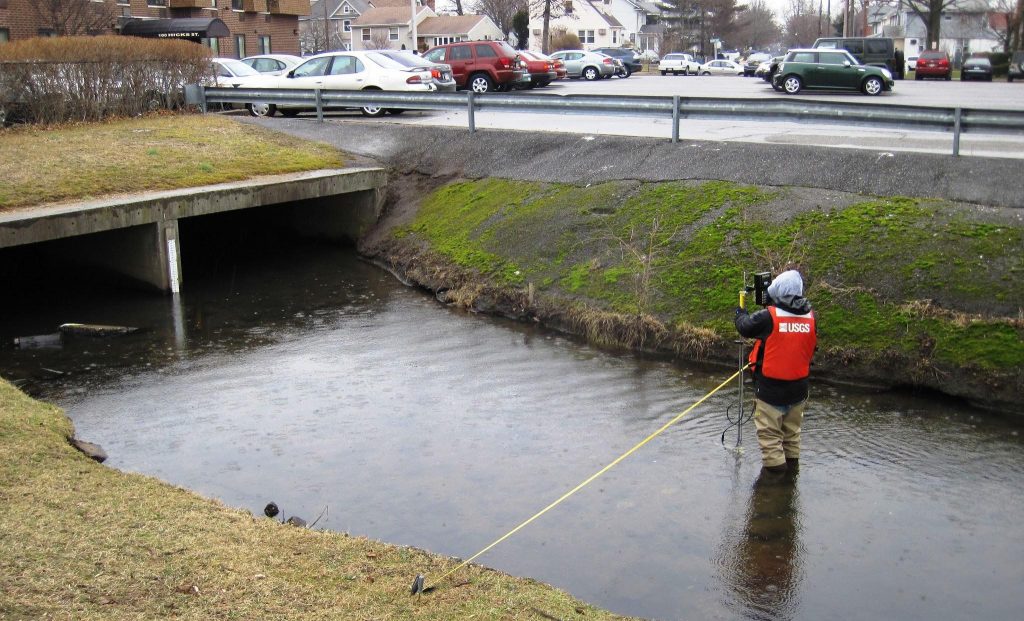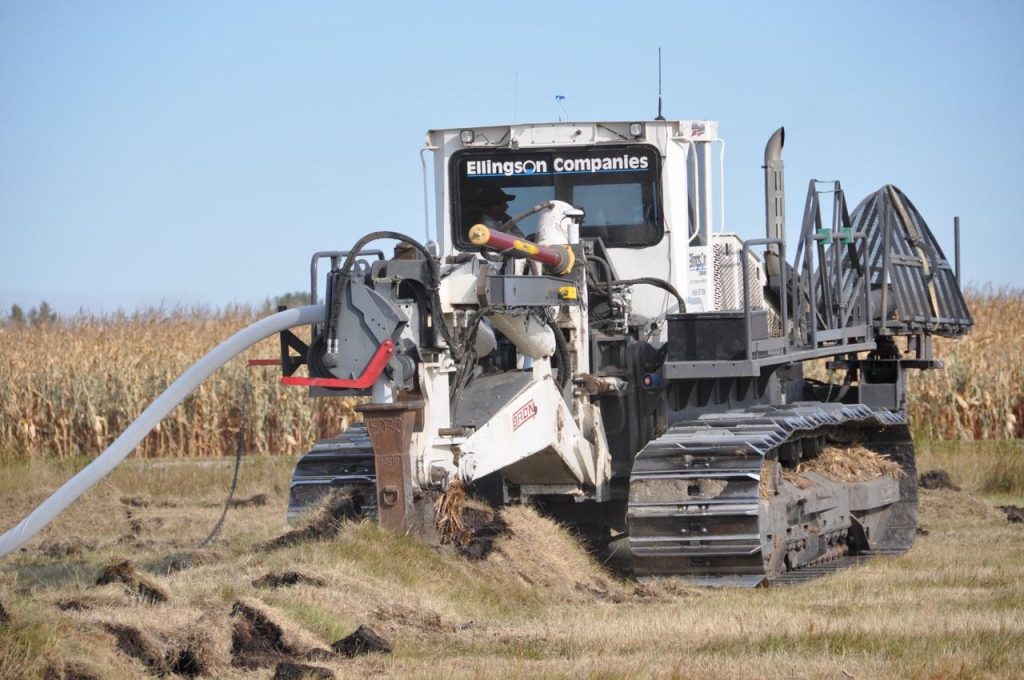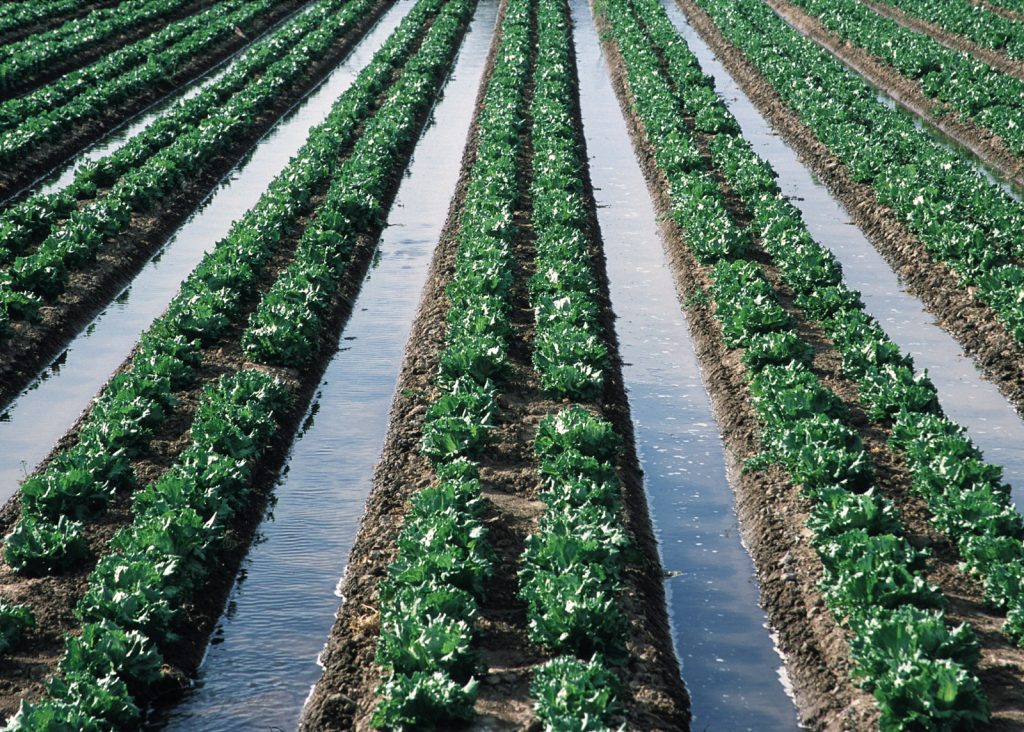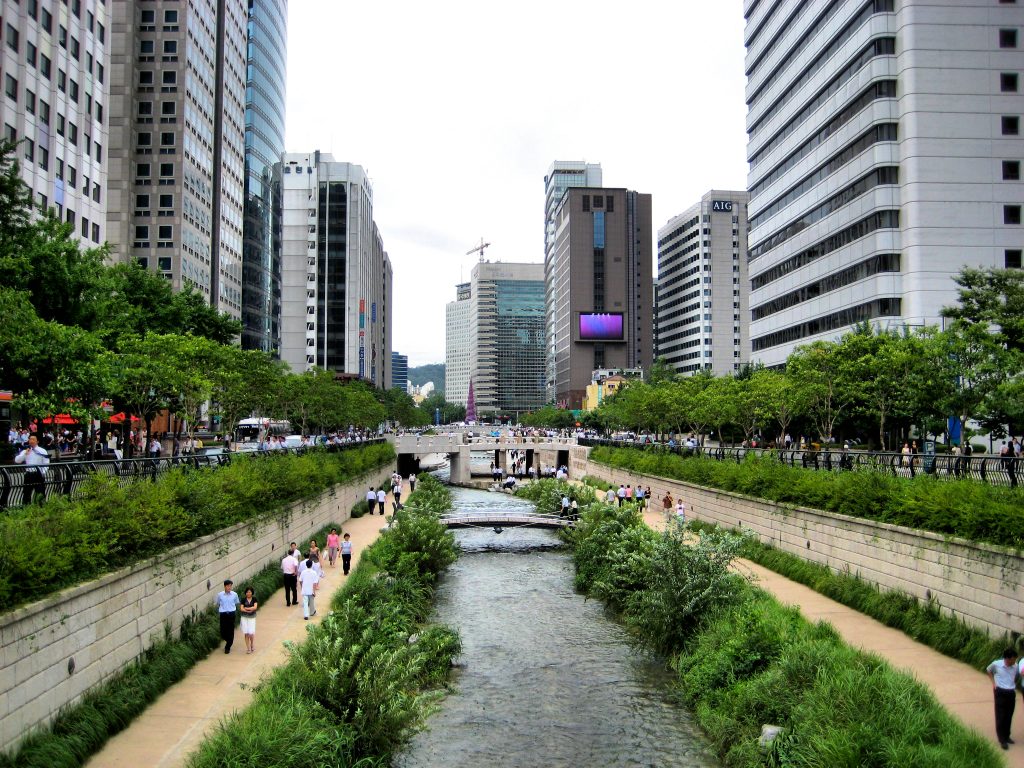9 Water Quantity and Quality Conservation
Colby Moorberg; Brooke Hogan; and Eric Brevik
Abbreviations
NAWQA – National Water-Quality Assessment
NOAA – National Oceanic and Atmospheric Administration
NRCS – Natural Resources Conservation Service
PDF – Portable Document Format
SWCS – Soil and Water Conservation Service
URL – Uniform Resource Locator
US – United States
USDA – United States Department of Agriculture
USGS – US Geological Survey
Introduction to Hydrology

Earle, S. 2015a. Chapter 13 Streams and Floods. In Physical Geology. Victoria, BC: BCcampus. https://opentextbc.ca/geology/part/chapter-13-streams-and-floods/.
In this chapter from the open textbook, Physical Geology, Earle provides an overview of streams and floods. Topics covered include the water cycle, drainage basins, stream erosion and deposition, stream types, and flooding. Each section in the chapter concludes with a learning exercise.
Earle, S. 2015b. Chapter 14 Groundwater. In Physical Geology. Victoria, BC: BCcampus. https://opentextbc.ca/geology/part/chapter-14-groundwater/.
In this chapter from the open textbook, Physical Geology, Earle provides an overview of groundwater. Topics on groundwater include groundwater aquifers, flow, extraction, and quality. Each section in the chapter concludes with a learning exercise.
Easton, Z. M., and E. Bock. 2015. Hydrology Basics and the Hydrologic Cycle. 9. Blacksburg, VA: Virginia Polytechnic Institute and State University. https://pubs.ext.vt.edu/BSE/BSE-191/BSE-191.html.
In this extension publication from Virginia Tech, Easton and Bock describe the distribution of water around the world and then detail each component of the water (or hydrologic) cycle. They discuss how the various components interact and give rreferences for additional readings.
Heath, R. C. 1983. Basic Ground-Water Hydrology. 86. Reston, VA: US Geological Survey. https://doi.org/10.3133/wsp2220.
This USGS water supply paper provides a comprehensive introduction to groundwater. This includes the geology through which groundwater flows, a description of what affects groundwater flows and how to depict it, ways to characterize aquifers, how to properly install wells, and issues involving groundwater quality and pollution.
USDA NRCS. 2012, May. National Engineering Handbook – Part 630 – Hydrology. https://directives.sc.egov.usda.gov/viewerFS.aspx?hid=21422.
This 22-chapter NRCS publication covers in great detail the duties and responsibilities of hydrologists who work for the NRCS, describing different hydrologic tests and measurements they may be expected to perform, sources of data on different aspects of hydrology, and accuracy of different measurements.
Drainage

Ghane, E. 2018. Agricultural Drainage. Extension Bulletin E3370. 8. East Lansing, MI: Michigan State University Extension. https://www.egr.msu.edu/bae/water/drainage/agriculturaldrainage.
Ghane describes the history, need for, and types of agricultural drainage used in the state of Michigan in this Michigan State University extension bulletin. The concepts do apply to other areas. The bulletin covers subsurface drainage systems in great detail, including some informative figures showing how tile lines work. Surface drainage using drainage ditches is discussed briefly.
Pavelis, G. A. 1987. Farm drainage in the United States: History, status, and prospects. Washington, D.C.: US Department of Agriculture, Economic Research Service. https://eric.ed.gov/?id=ED295043.
Pravelis reviews the history of agricultural drainage in this USDA ERS publication, including the theory behind drainage, planning and engineering, and drainage economics. Drainage is also described within the context of federal programs that existed at the time of publication.
SWCS Events. 2018. Drainage Water Management: More Control and Greater Benefits for Your Field. Ankeny, IA: SWCS. https://vimeo.com/291575807.
This short (approximately 3 minute) video covers the basics of managed drainage using stop log structures. This technique allows land managers to control how much water is drained from agricultural land to either hold water back in a dry year, or prevent flushing nutrients out of the field following a big rain event.
Irrigation

Hopkins, B., D. A. Horneck, R. Stevens, J. W. Ellsworth, and D. M. Sullivan. 2007. Managing irrigation water quality for crop production in the Pacific Northwest. 29. Bend, Oregon, US: Oregon State University, University of Idaho, Washington State University. https://catalog.extension.oregonstate.edu/pnw597.
Hopkins et al. describe using water analyses to develop appropriate water management plans in irrigated agricultural systems in this Pacific Northwest Extension Publication. This includes the types of water tests to conduct, how to collect water samples, interpretating laboratory reports, and management options. They also discuss potential challenges in irrigated agriculture.
Rogers, D. H., J. Aguilar, I. Kisekka, P. L. Barnes, and F. R. Lamm. 2014. Soil, Water, and Plant Relationships. 8. Manhattan, KS: Kansas State University Agricultural Experiment Station and Cooperative Extension Service. https://www.bookstore.ksre.ksu.edu/Item.aspx?catId=363&pubId=491.
This extension publication is part of the Irrigation Management Series of publications from Kansas State University Research and Extension and provides an overview of soil, water, and plant relationships to aid producers in managing irrigation systems. Soil water content is discussed, as is soil water tension, soil texture, bulk soil density, and root depth. The authors emphasize how soil texture influences soil water-holding capacity, where plant roots obtain most nutrients and moisture, and how soil and water quality affects water uptake in plants.
USDA NRCS. 2001. Chapter 15 Irrigation. In Engineering Field Handbook, 60. Washington, D.C.: USDA NRCS. https://directives.sc.egov.usda.gov/OpenNonWebContent.aspx?content=17552.wba.
This chapter from the NRCS Engineering Field Handbook includes information for designing irrigation systems, describing the advantages of irrigation and what a successful irrigation system design requires. The chapter then details considerations in designing irrigation systems, basic design criteria, irrigation methods, water conveyance, land leveling, water disposal, equipment, measuring soil moisture, irrigation water management, irrigation scheduling, and more.
Water Conservation Principles and Practices

Presley, D., D. Shoup, J. Holman, and A. Schlegel, eds. 2012. Efficient Crop Water Use in Kansas. Manhattan, KS: Kansas State University Agricultural Experiment Station and Cooperative Extension Service. https://www.bookstore.ksre.ksu.edu/Item.aspx?catId=363&pubId=15559.
This 44 page extension publication from Kansas State University includes seven brief chapters focused on practices for efficiently managing crop water use in Kansas. Those chapters focus on management practices including conservation tillage, residue management, use of specific center pivot irrigation nozzles, managing crop row spacing and orientation, nutrient management for water use efficiency, and weed control.
Rogers, D., P. L. Barnes, G. M. Powell, and K. Ebert. 2014. Irrigation Water. 8. Manhattan, KS: Kansas State University Agricultural Experiment Station and Cooperative Extension Service. https://www.bookstore.ksre.ksu.edu/Item.aspx?catId=363&pubId=16942.
In this extension publication from Kansas State University Research and Extension, Rogers et al. describe the history of irrigation in the state of Kansas and trends in irrigation water use. Most of the irrigation water use is concentrated in the western third of the state, leading to severe depletion of the Ogallala and High Plains Aquifers in recent decades. The authors state that the economic importance of irrigation and lack of precipitation in western Kansas makes it unlikely that producers in the area will turn from irrigation. They further explain how irrigation water use efficiency and crop yield on irrigated land in western Kansas has improved over the last few years. These improvements are so far large enough to compensate for losses caused by decreased water levels in wells in certain areas.
Rogers, D. H., J. Aguilar, I. Kisekka, P. L. Barnes, and F. R. Lamm. 2015a. Agricultural Crop Water Use. 12. Manhattan, KS: Kansas State University Agricultural Experiment Station and Cooperative Extension Service. https://www.bookstore.ksre.ksu.edu/Item.aspx?catId=363&pubId=18185.
In this extension publication, Rogers et al. describe the characteristics and controlling factors of crop water use and how crop water use can be measured at different time scales. They describe what causes variation in water use on diurnal, daily, and seasonal time scales. For seasonal water use, the authors describe how water use by a crop can compare to a reference crop in order to estimate evapotranspiration. The authors then describe how water use by crops can be normalized by the resulting yield produced and give a table of examples of various food items relative to how many gallons were required to produce each food item. They further relate these relationships to irrigation and water use efficiency.
Rogers, D. H., J. Aguilar, I. Kisekka, P. L. Barnes, and F. R. Lamm. 2015b. Important Agricultural Soil Properties. 8. Manhattan, KS: Kansas State University Agricultural Experiment Station and Cooperative Extension Service. https://www.bookstore.ksre.ksu.edu/Item.aspx?catId=363&pubId=18183.
In this Kansas State University Research and Extension publication, Rogers et al. explain the relationship between soil properties and plant available water and how this relationship affects crop production. Soil texture, structure, series, density, and water content were discussed. Producers do not generally have the power to alter soil texture, but it is important to how much water a soil can hold. Soil structure and density are commonly altered by agricultural activities through compaction. Compacted soils have poor structure and high densities, thus decreasing the soil’s capacity to retain water. Regardless of how much water a soil can hold, what is most important is the portion of the water that is available to plant roots, or plant available water. The portion of soil water is influenced by the porosity and texture of a soil.
Managing Watersheds for Water Quality

Capel, P. D., K. A. McCarthy, R. H. Coupe, K. M. Grey, S. E. Amenumey, N. T. Baker, and R. L. Johnson. 2018. Agriculture — A River Runs Through It — The Connections Between Agriculture and Water Quality. 216. Reston, VA: USGS. http://pubs.er.usgs.gov/publication/cir1433.
This USGS report is one of a series of publications, The Quality of Our Nation’s Waters that provides overviews of the major findings from the NAWQA program. This report is focused on the influence of agriculture on water quality. The report describes the following topics over nine chapters: the NAWQA studies on water quality and agriculture; an overview of water quality and agriculture; changes to agriculture over time in the US; terrain, climate, soil, and water; water on the pre-agriculture landscape; agricultural water and soil management; water on the agricultural landscape; chemicals in animal and crop agriculture; and connections between agriculture and water quality.
Crouse, D., J. Godfrey, R. McLaughlin, and D. L. Osmond. 2015. Soils and Water Quality. Raleigh, NC: NC State University. https://content.ces.ncsu.edu/soils-and-water-quality.
Crouse et al. discuss the relationship between soil management and water quality in this North Carolina State University Extension publication. Management practices, or effects of management practices that impact soil and water quality discussed in this publication include soil erosion and sedimentation, runoff and leaching, household waste disposal, and land application of nutrient-laden organic materials. The bulletin concludes by emphasizing the importance of good soil management and the influence farmers can have in improving soil and water quality through conservation practices.
NOAA. 2017, July 6. Nonpoint Source Pollution. https://oceanservice.noaa.gov/education/tutorial_pollution/welcome.html.
This NOAA web page defines nonpoint source pollution as “pollution from sources that can’t be tied to a specific location” and shows it is not always the type of material but the concentration of a material that makes it a pollutant. Links lead to a tutorial in a downloadable PDF, as well as links to an extensive series of educational resources on nonpoint source pollution.
US EPA, O. 2015, February 12. Watershed Academy. https://www.epa.gov/watershedacademy.
The EPA’s Watershed Academy is a website designed for self-paced training on watershed management using online training modules, webcasts, and watershed management publications for educating interested parties in a variety of relevant watershed management topics. The modules and resources were designed for college freshman-level learners. Users can earn a “Watershed Academy Web Training Certificate” by completing 15 modules.
US EPA Office of Water. 2000. Big Darby Creek Case Study: A Profile of Watershed Threats and Protection in a Midwest Landscape. 37. Washington, D.C.: EPA. https://nepis.epa.gov/Exe/ZyPDF.cgi/20004K1S.PDF?Dockey=20004K1S.PDF.
The EPA investigated environmental threats and protection efforts, or lack thereof, for the Big Darby Creek and surrounding watershed in Ohio from the 1960s to 1990s. This case study, developed for the EPA’s Watershed Academy, summarizes that investigation, providing an introduction and a description of the watershed setting. The case study then provides a short history of recent developments and a description of threats to the watershed. Responses to those threats are then summarized, along with factors significant to the success of the responses. The case study closes with some final observations. The URL offers a direct download of a PDF of this resource.
US EPA Office of Water. 2019b, February 20. Agricultural Management Practices for Water Quality Protection. https://cfpub.epa.gov/watertrain/moduleFrame.cfm?parent_object_id=1362.
This online training module is one of several required modules in the Watershed Management Certificate Program. It is published by the EPA as part of its Watershed Academy. This module highlights and describes four principal agricultural management practices and four main nonpoint source pollution management methods. The practices and methods discussed include conservation tillage, crop nutrient management, pest management, conservation buffers, irrigation water management, grazing management, animal feeding operations management, and erosion and sediment control.
USDA NRCS. 2012a. Nutrient Management. Conservation Practice Standard Overview 590. 8. Washington, D.C.: USDA NRCS. https://www.nrcs.usda.gov/Internet/FSE_DOCUMENTS/stelprdb1255175.pdf.
This NRCS conservation practice standard overview defines nutrient management as managing the timing, placement, and amount of plant nutrients to optimize yield and minimize risk of surface and groundwater pollution. The overview includes general information about nutrient management as a conservation practice and states that nutrient management is commonly associated with conservation practices aimed at mitigating erosion and reducing nutrient runoff. The URL offers a direct download of a PDF of this resource.
USDA NRCS. 2012b. Nutrient Management. Conservation Practice Standard 590. 8. Washington, D.C.: USDA NRCS. https://www.nrcs.usda.gov/Internet/FSE_DOCUMENTS/stelprdb1046433.pdf.
This NRCS conservation practice standard overview defines nutrient management as managing the timing, placement, and amount of plant nutrients to optimize yield and minimize risk of surface and groundwater pollution. The standard includes further information on the purpose of the practice, along with conditions where it applies, criteria for the practice, general considerations, information for plans and specifications, and information on operation and maintenance. The URL offers a direct download of a PDF of this resource.
Water Quality in Urban Watersheds

Cappiella, K., W. P. Stack, L. Fraley-McNeal, C. Lane, and G. McMahon. 2012. Strategies for managing the effects of urban development on streams. 80. Reston, VA: US Geological Survey. http://pubs.er.usgs.gov/publication/cir1378.
This USGS report, one of a series of publications, The Quality of Our Nation’s Waters, that provides overviews of the major findings from the NAWQA program. This report describes the following topics over seven chapters: a history of urban stream management, impacts of urban development, watershed management strategies to reduce the impact of urban development, and key challenges in managing urban development on streams.
Crouse, D., R. McLaughlin, and D. L. Osmond. 2015. Managing Lawns and Gardens to Protect Water Quality. Raleigh, NC: NC State University. https://content.ces.ncsu.edu/managing-lawns-and-gardens-to-protect-water-quality.
Crouse et al. developed this North Carolina State University extension bulletin for homeowners wanting to reduce any environmental impact yard maintenance. They begin by explaining why water quality is a cause for concern. They then describe common sources of water pollution and ways to reduce water pollution. They explain that management of lawns and gardens should focus on reducing soil disturbance, increasing soil cover, and limiting nutrient and pesticide application. To reach these ends, practice the following: read pesticide and nutrient labels carefully; invest in alternatives to chemical pest management; avoid over-irrigation; and dispose of lawn and garden chemicals safely.
Freeborn, J. 2015. Decreasing Runoff and Increasing Stormwater Infiltration. 6. Blacksburg, VA: Virginia Polytechnic Institute and State University. https://www.pubs.ext.vt.edu/content/dam/pubs_ext_vt_edu/426/426-046/426-046-PDF.pdf.
In this extension publication from Virginia Tech, Freeborn explains how individual homes can contribute to stormwater runoff and practices that can decrease runoff from private residences. Freeborn begins with an example calculation of how much runoff can be generated by the impermeable surfaces of a single house. He then lists the practices that can be implemented on a single residence, including increasing permeability, directing water to more permeable areas, detaining water to allow infiltration, intercepting and holding rainwater, and using water on-site as needed. A variety of practices that can be used on already existing houses are then described, with photographs of each practice in place. The URL offers a direct download of a PDF of this resource.
US EPA Office of Water. 2019, February 20. 8 Tools of Watershed Protection in Developing Areas. https://cfpub.epa.gov/watertrain/moduleFrame.cfm?module_id=32&parent_object_id=1278&object_id=1278.
This online module published by the EPA outlines eight tools and practices that help protect watersheds and aquatic resources. The tools and practices include land use planning, land conservation, aquatic buffers, improved site design, stormwater best management practices, stewardship programs, non-stormwater discharge management, and sediment and erosion control. The goal of this module is to offer communities tools to sustainably protect the environment in developing areas. The module is one of 15 in the Watershed Management Certificate Program, and is hosted on the EPA’s Watershed Academy website.
USGS. 2019a. Urban Land Use and Water Quality. https://water.usgs.gov/edu/urbanquality.html.
This web page from the USGS provides a concise overview of the effects of urban land use on water quality. It covers water quality and ecology of small streams, streamflow alterations, effects of sealcoating on streams, effects of urban land use and groundwater quality, and pollution of lake and reservoir sediments from urban activities. Many links lead to related resources, including USGS pages for related topics and links to relevant publications from the USGS.
USGS. 2019b. Urbanization and Water Quality. https://water.usgs.gov/edu/urbanquality.html.
This web page from the USGS provides a concise overview of the effects of urbanization on water quality. It describes changes made and effects on watersheds related to initial urbanization, continued urbanization, and local communities taking steps to fix problems. Many links lead to related resources, including USGS pages for related topics and links to relevant publications from the USGS.

